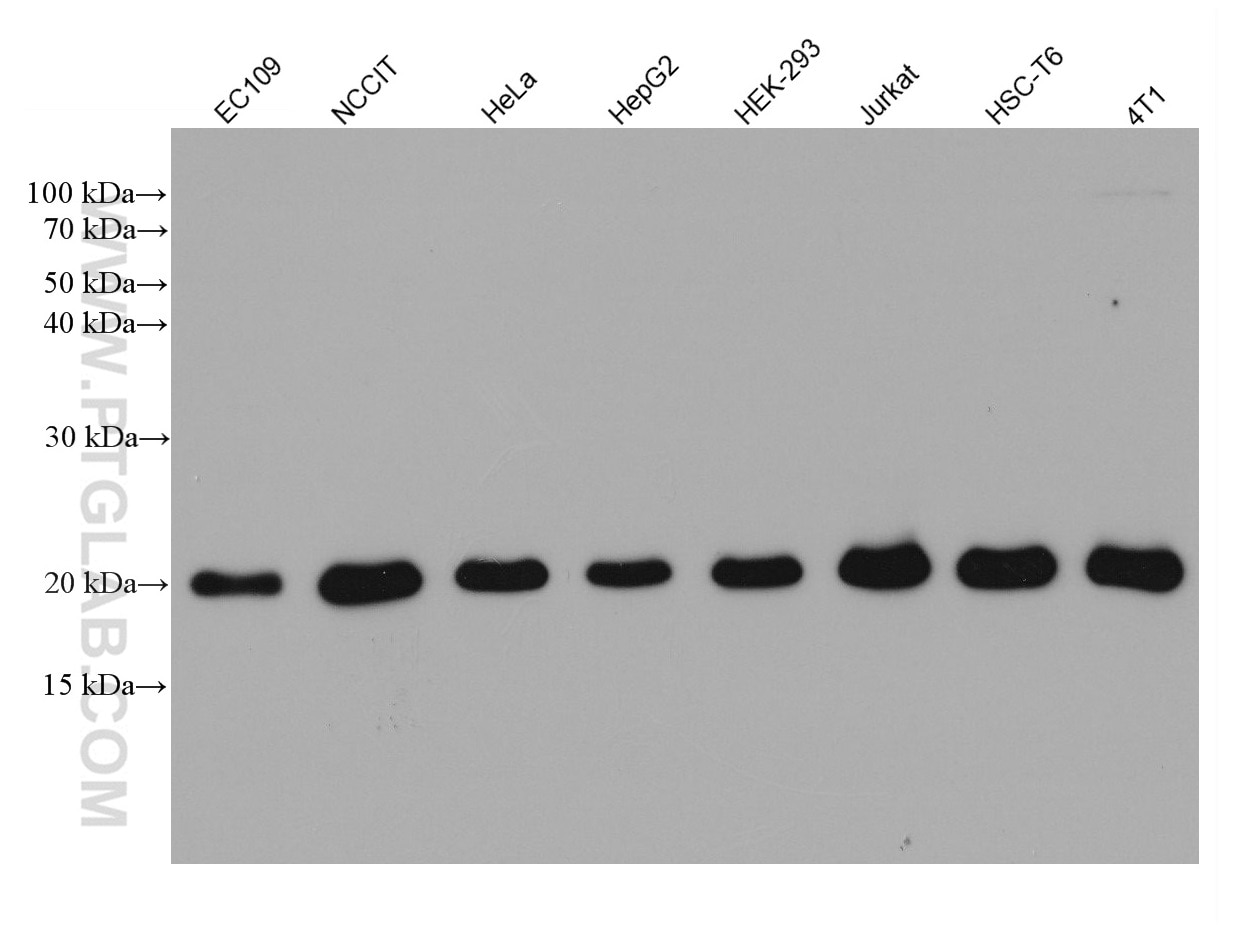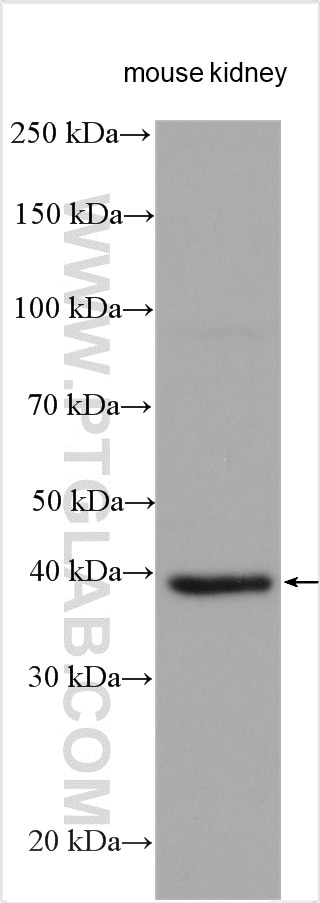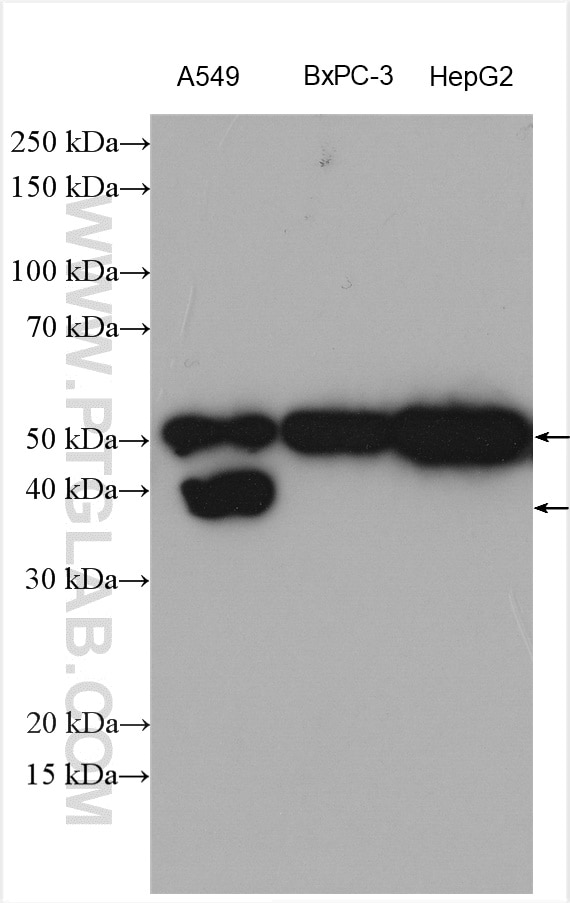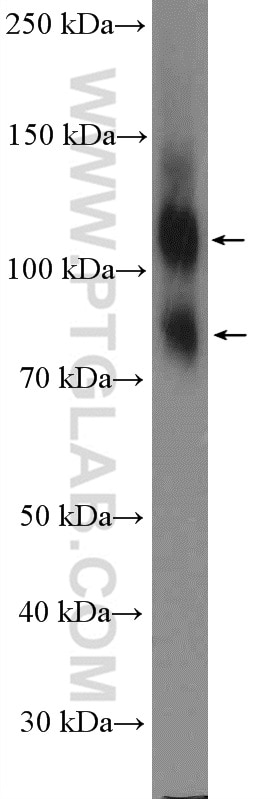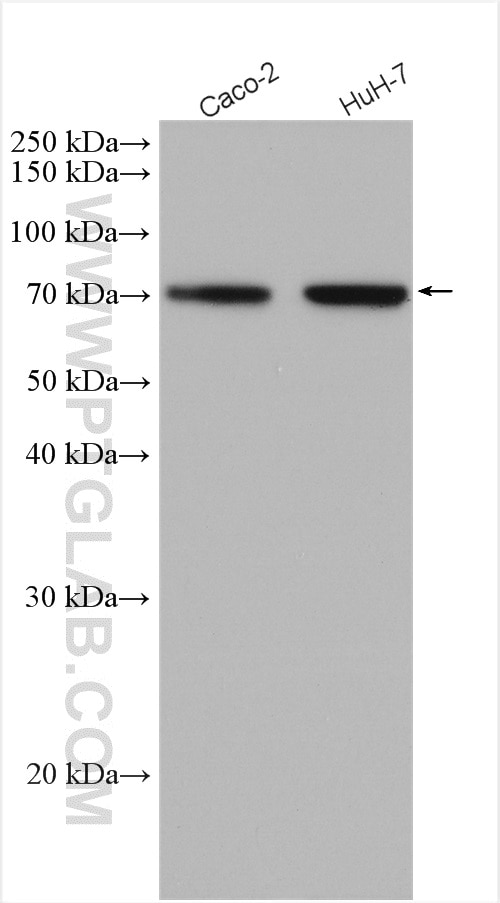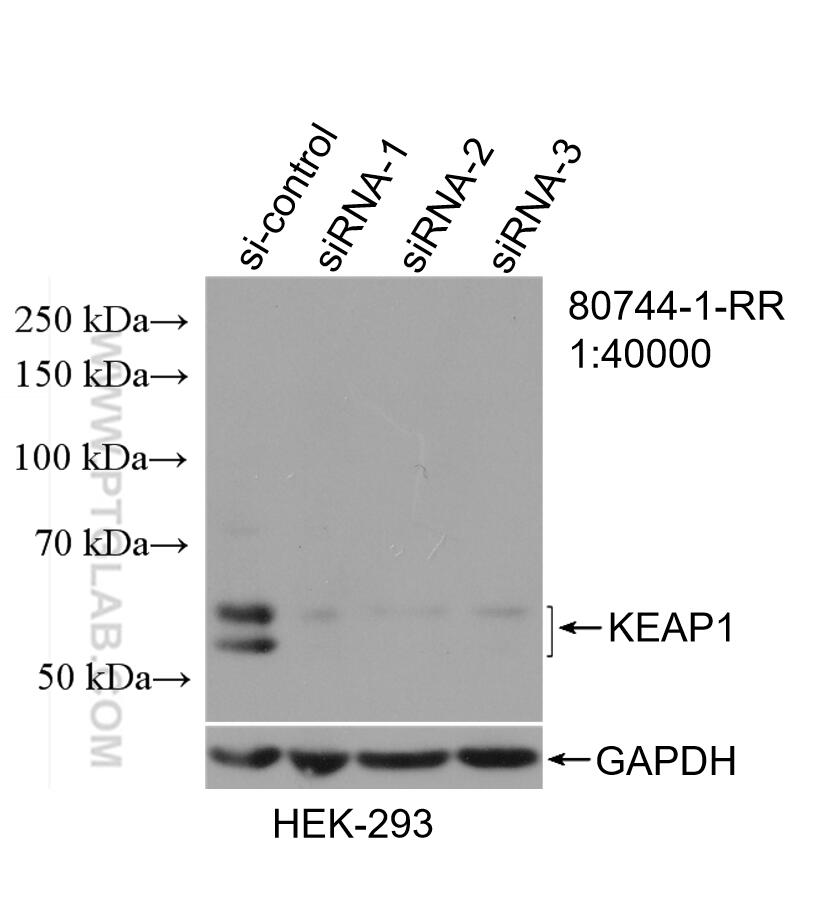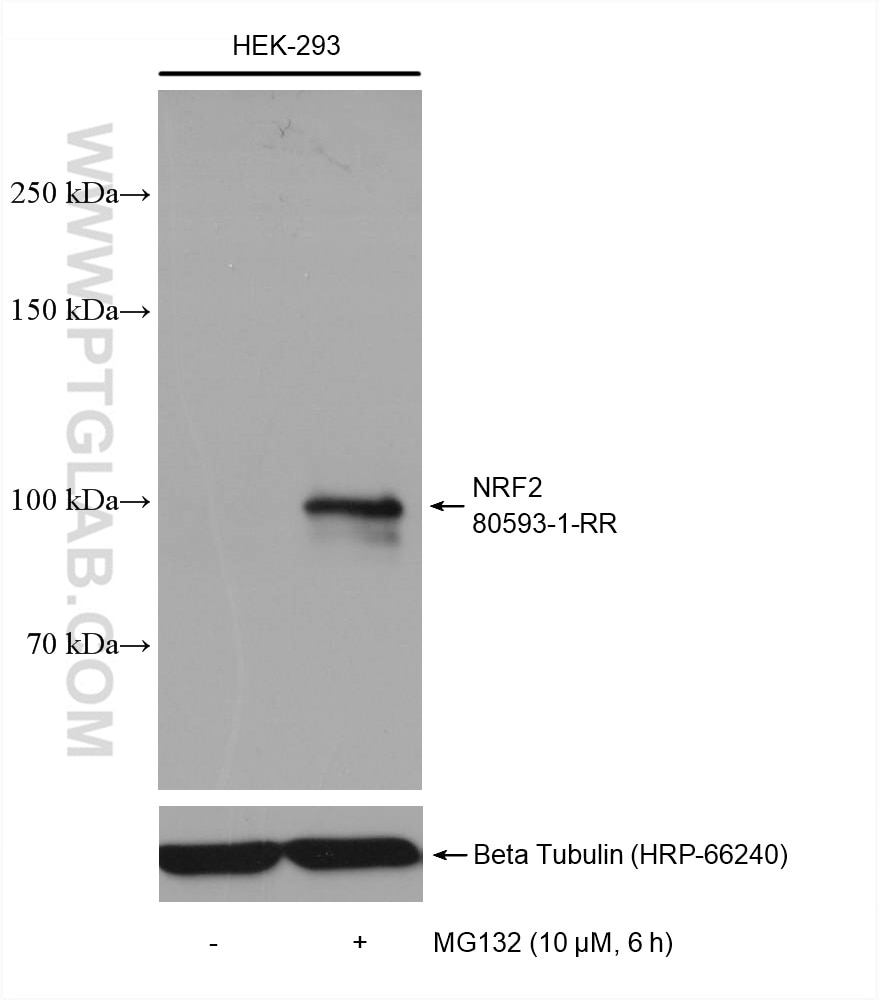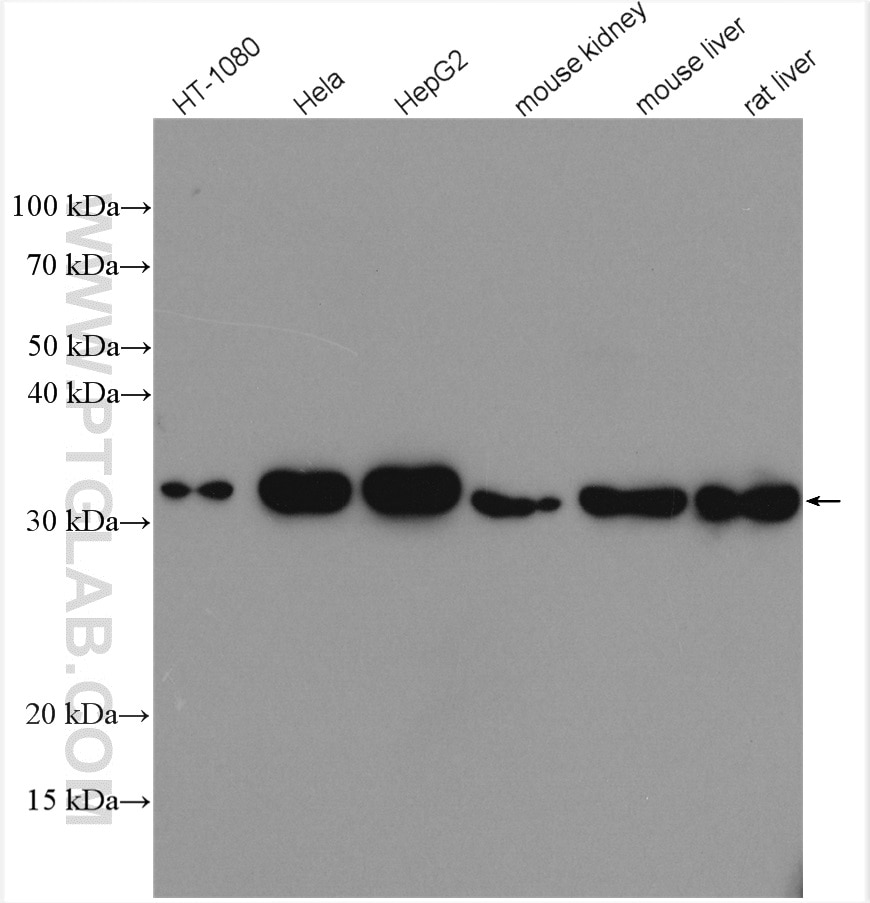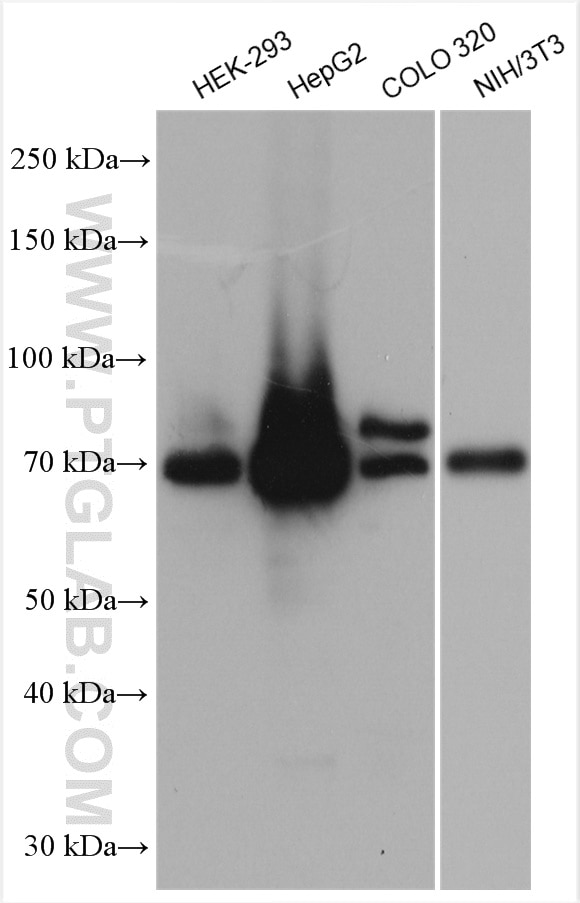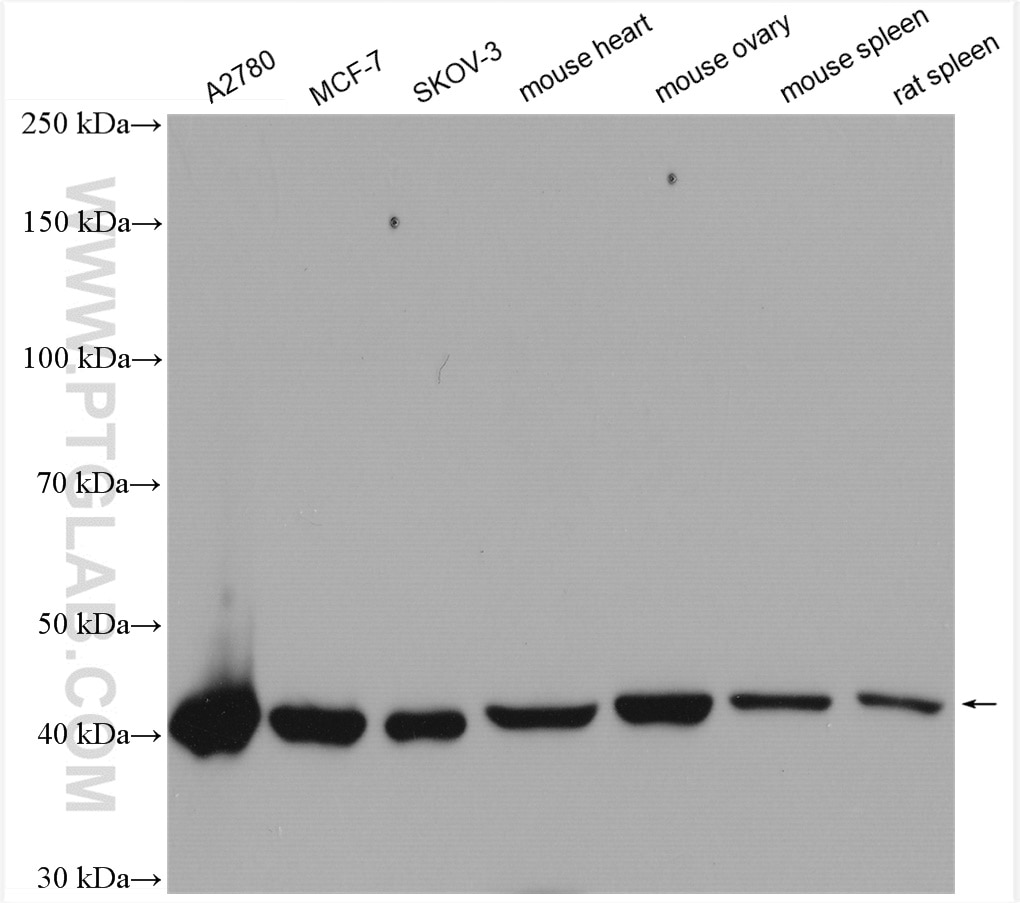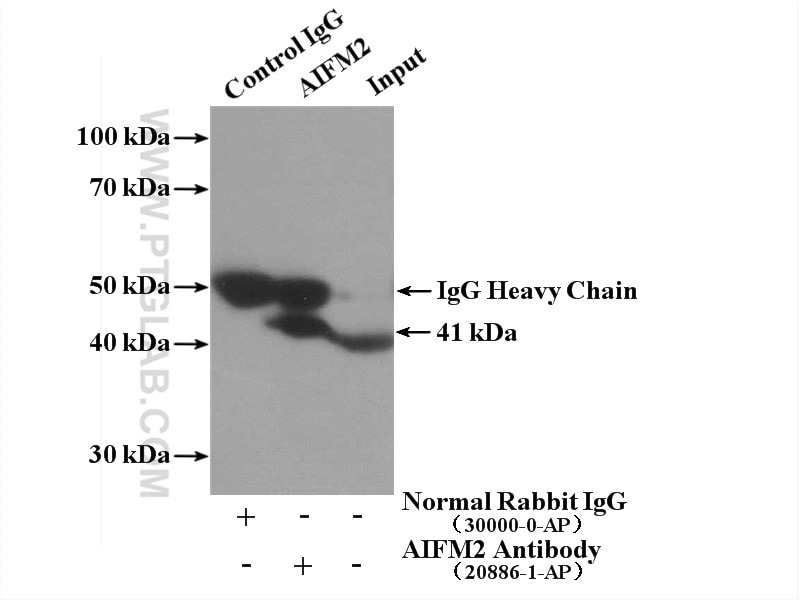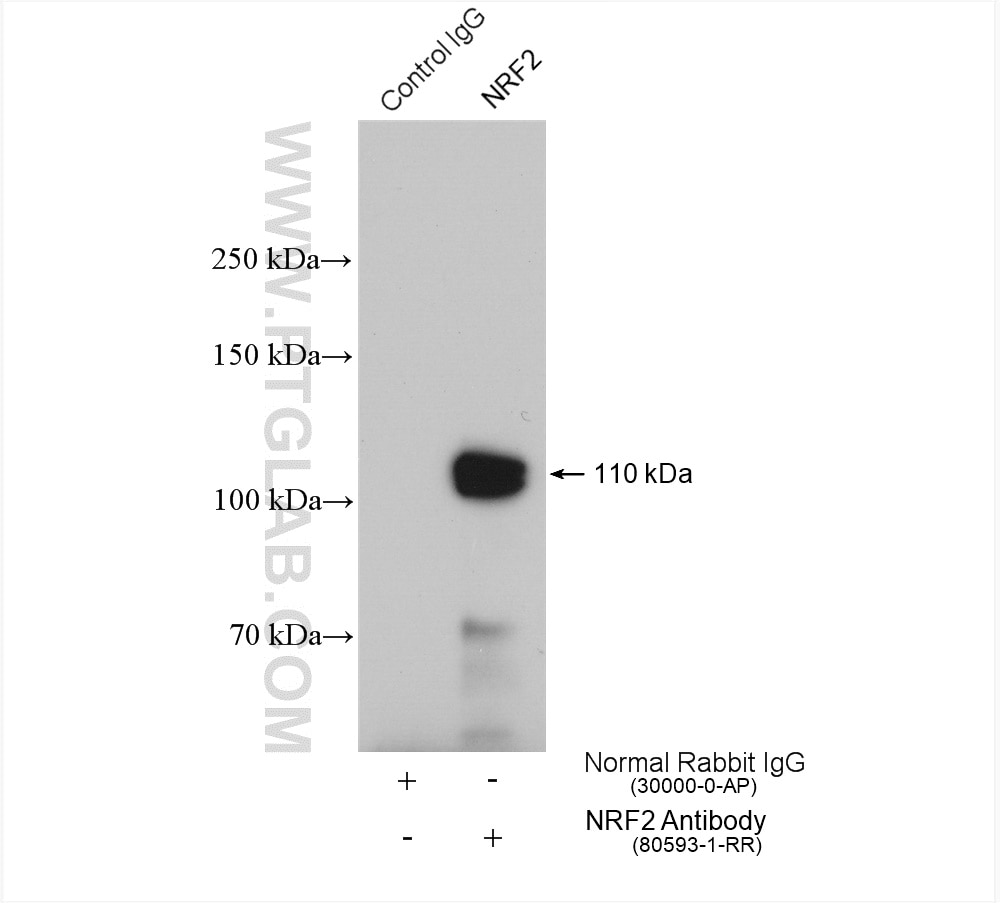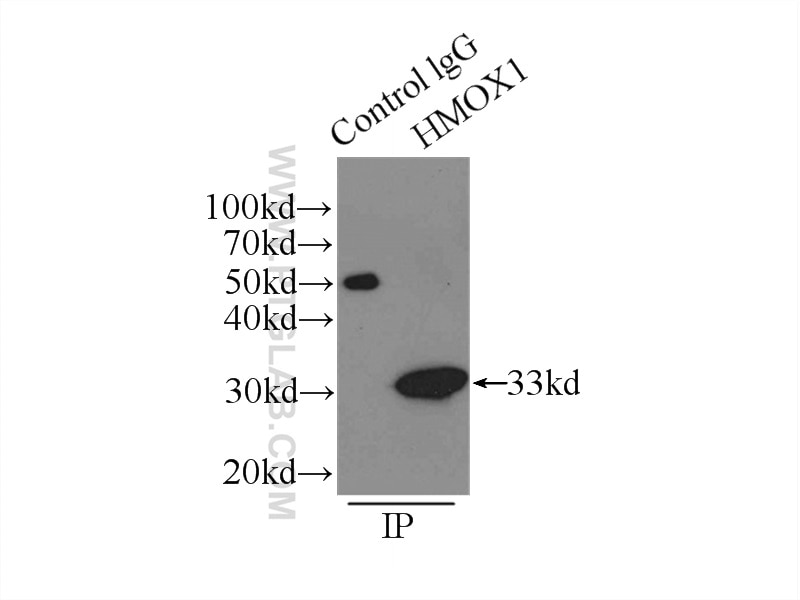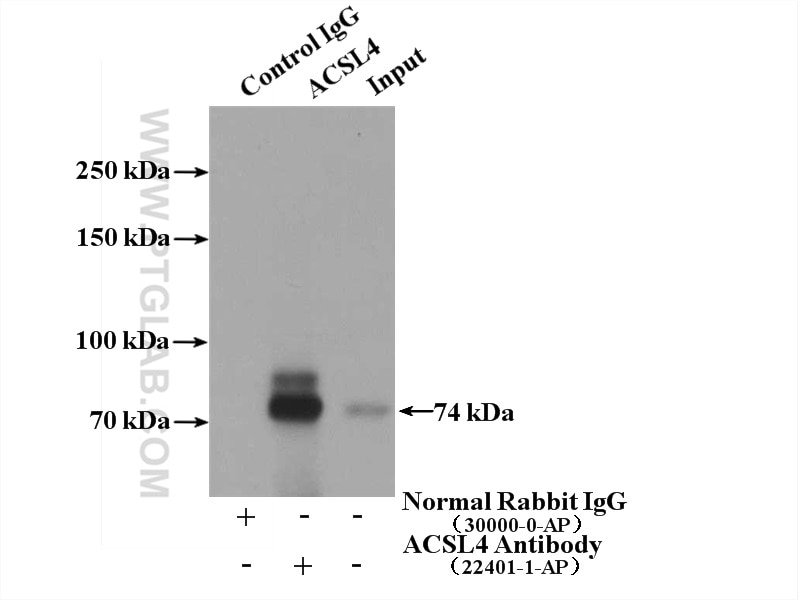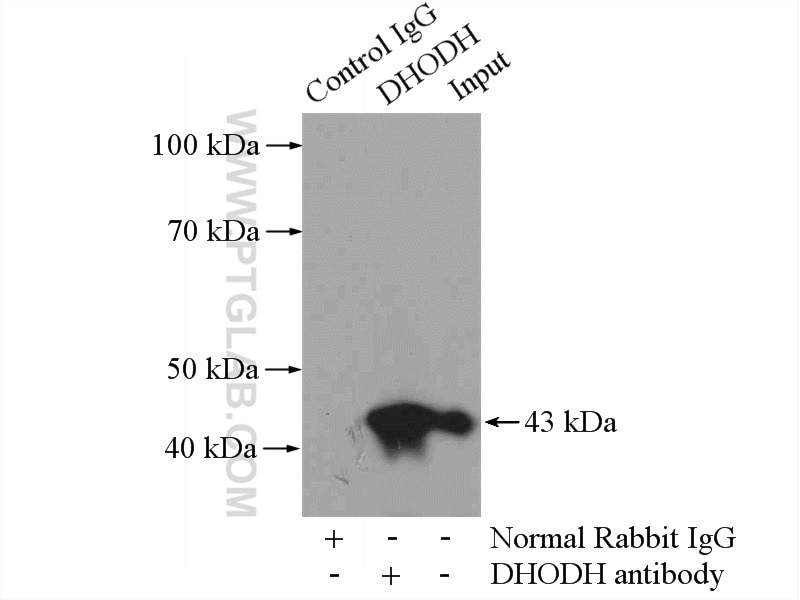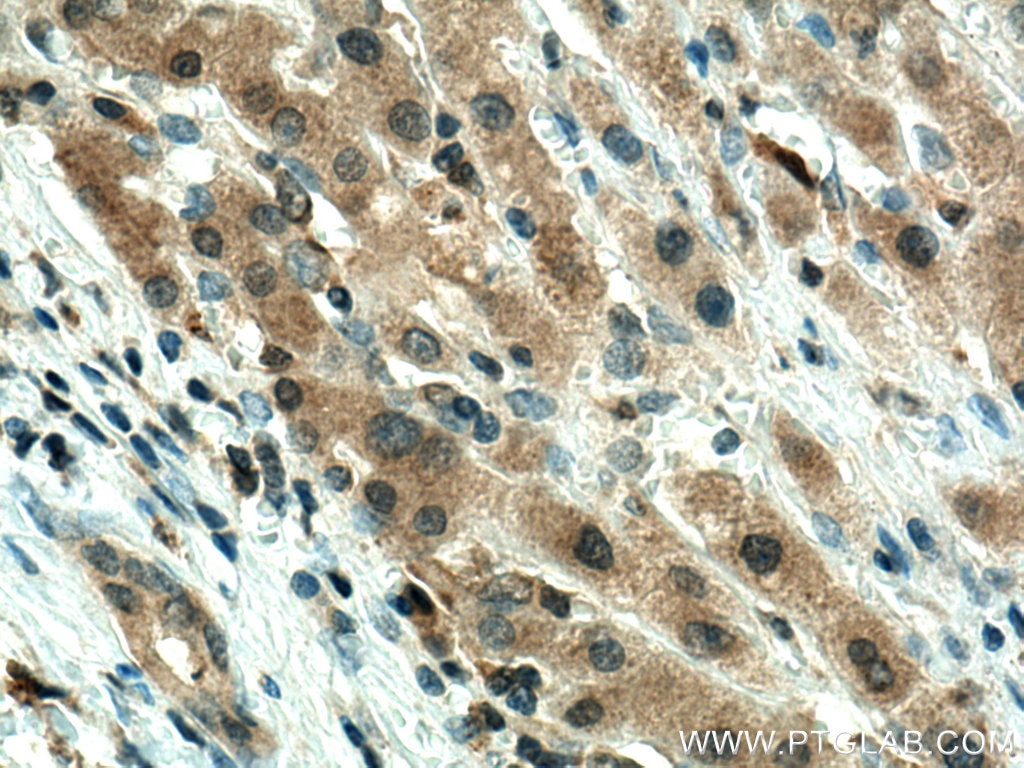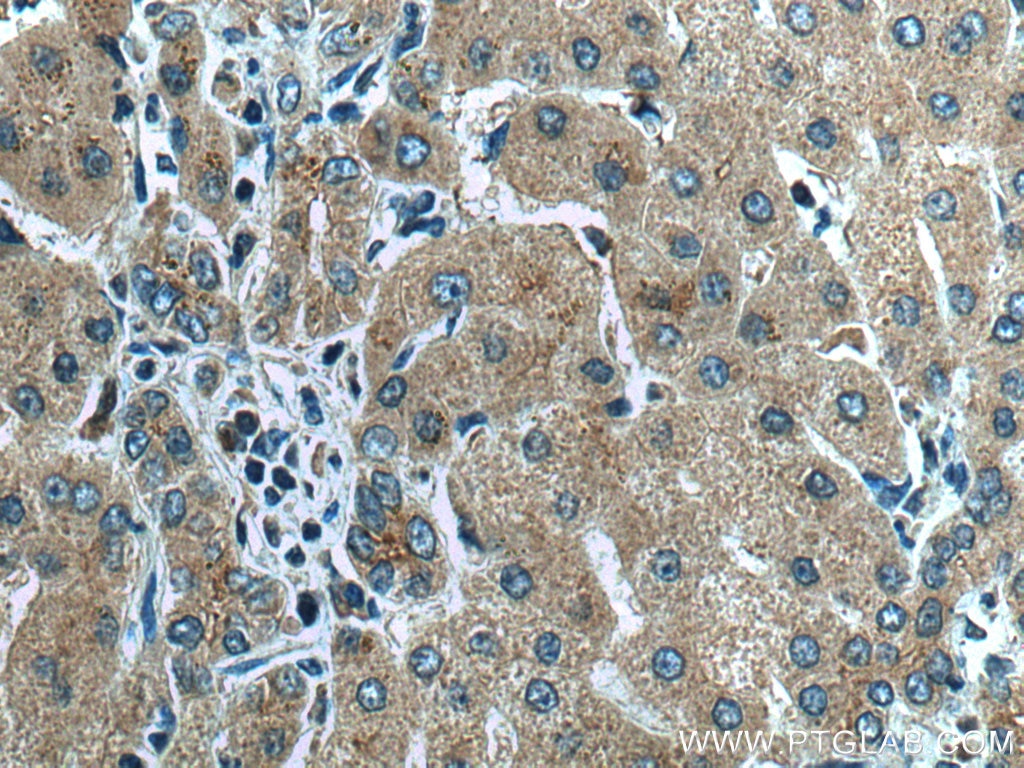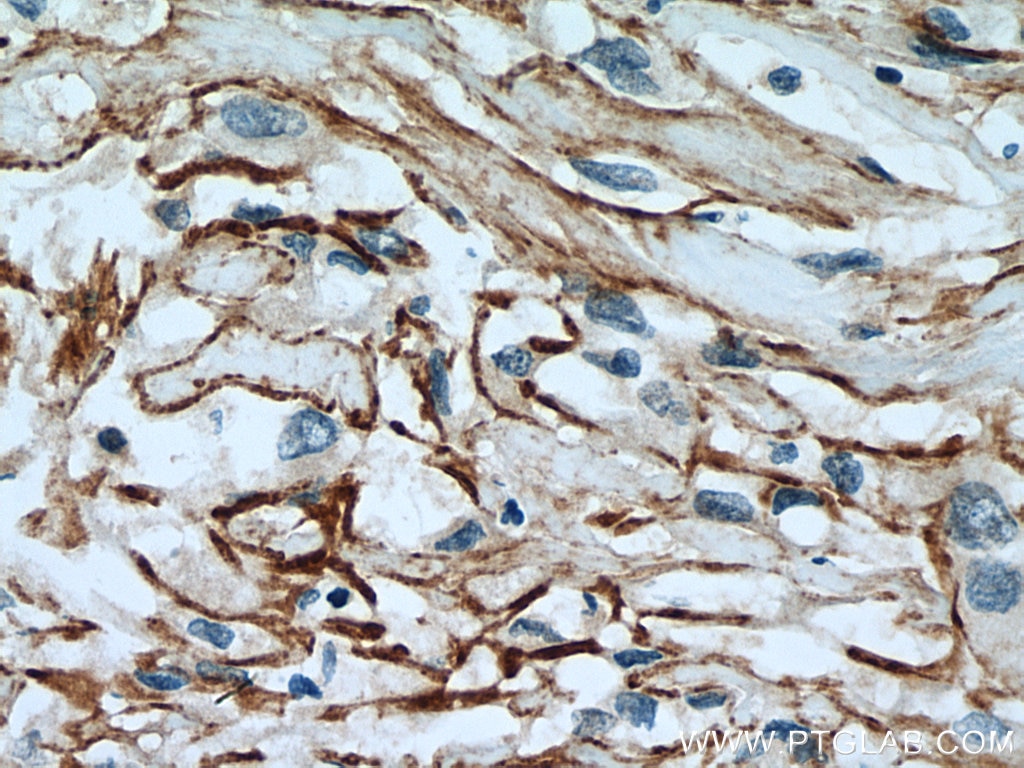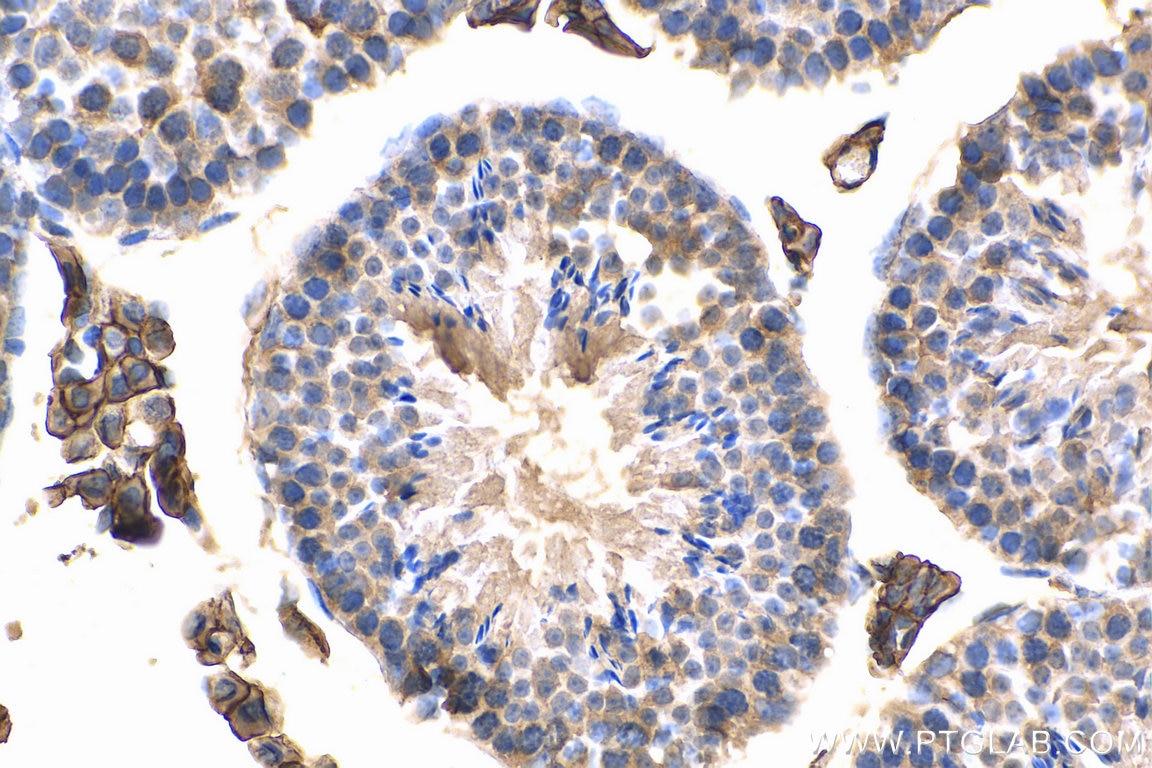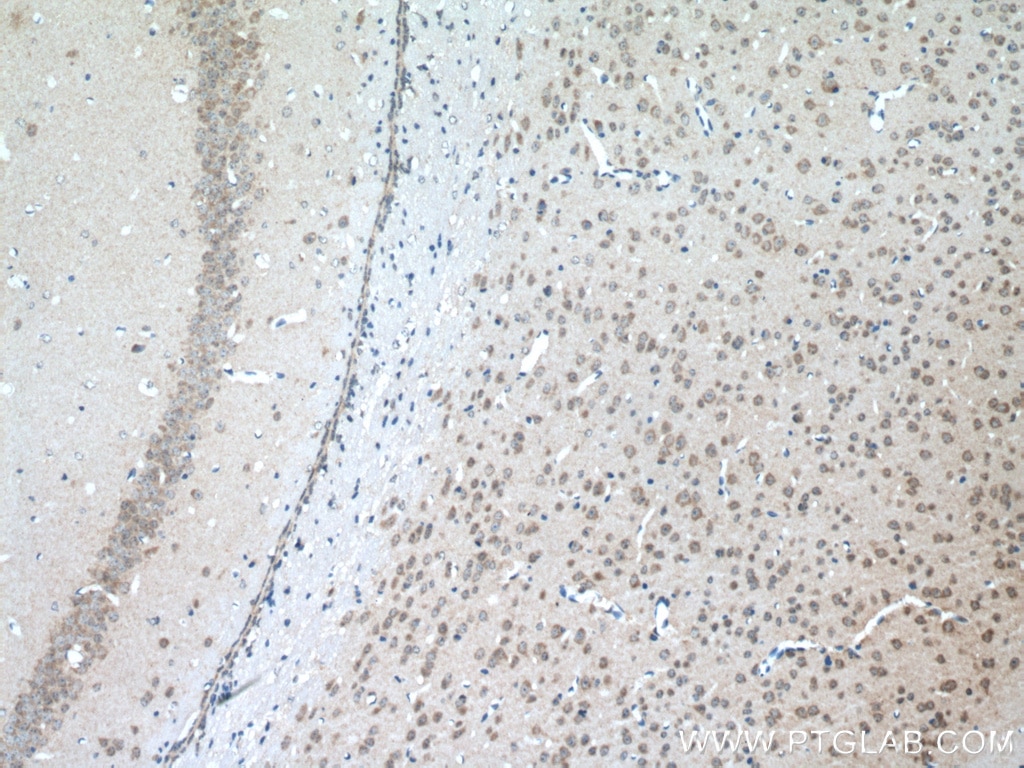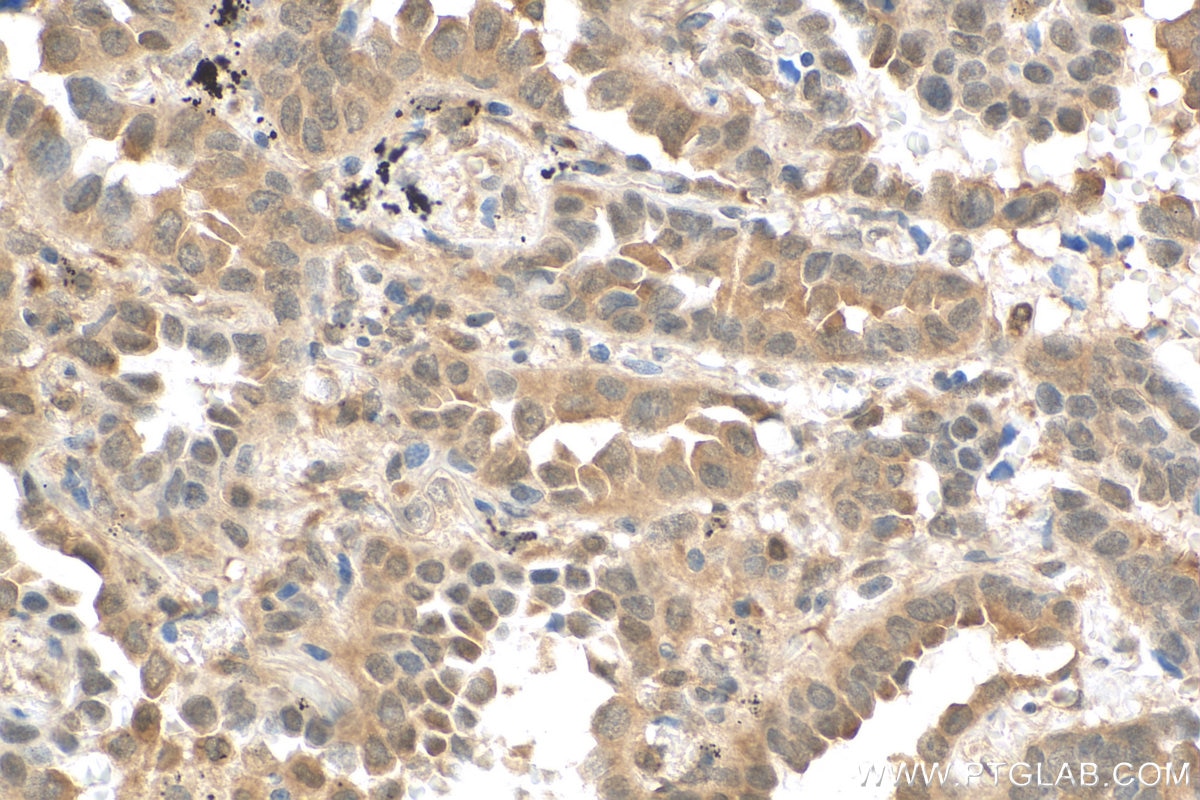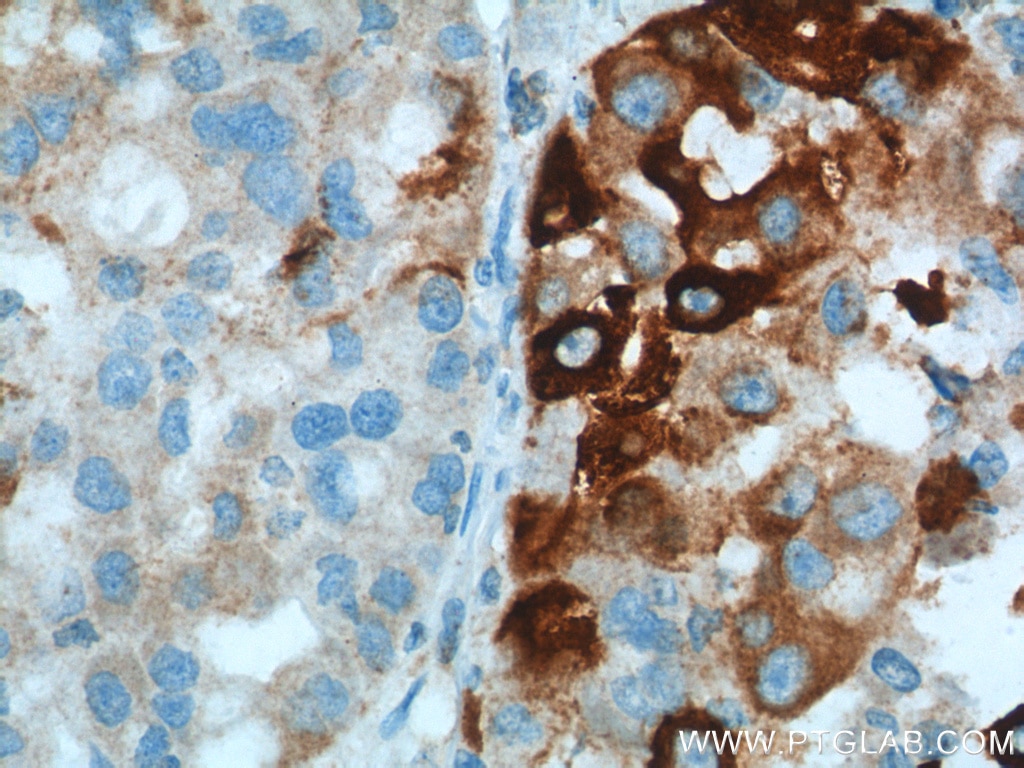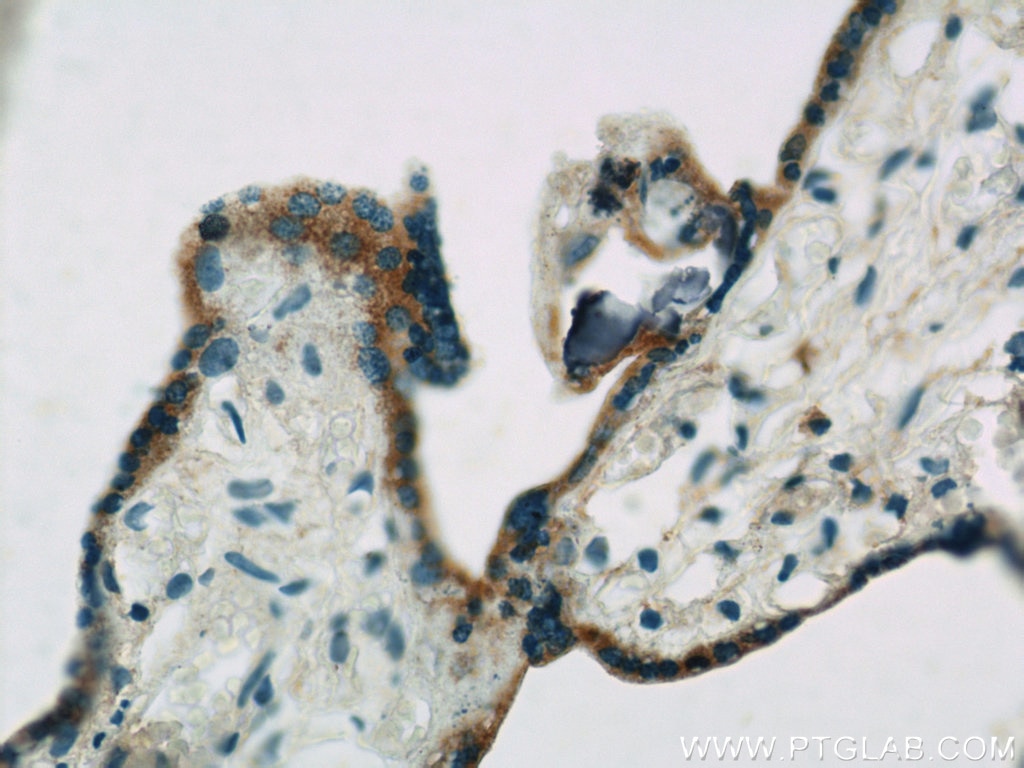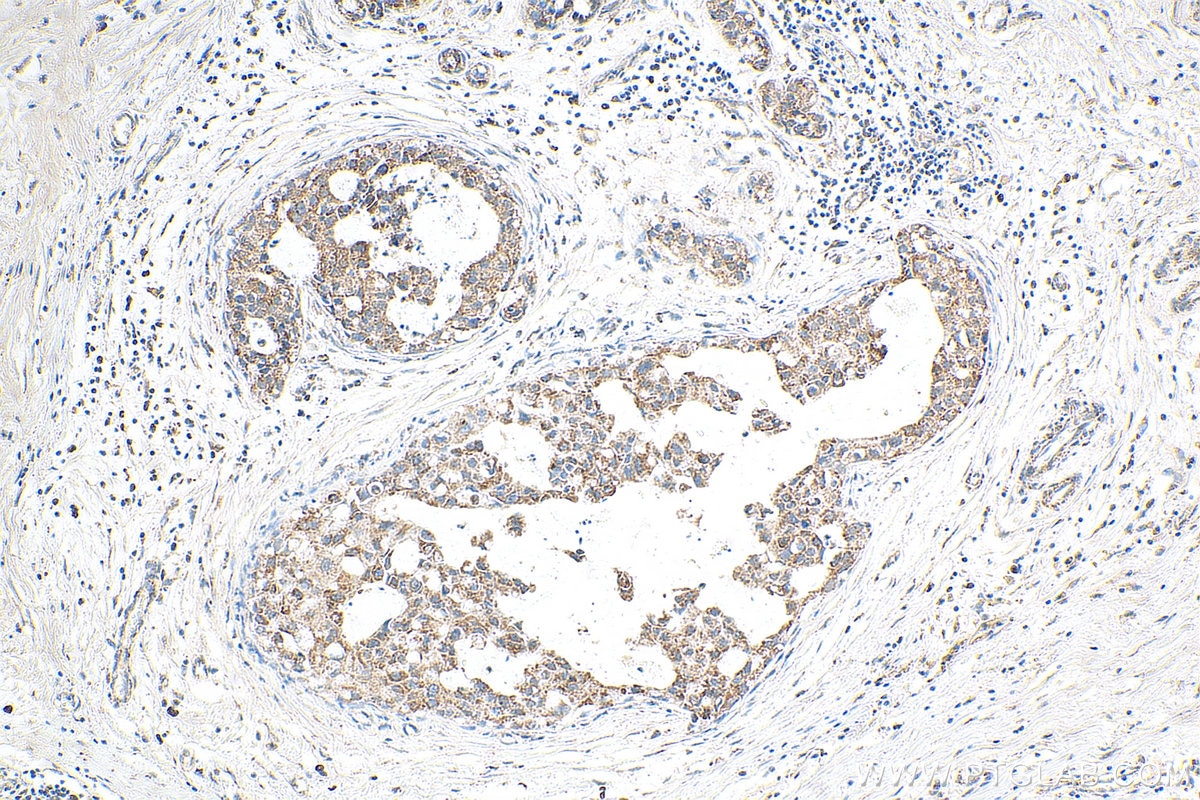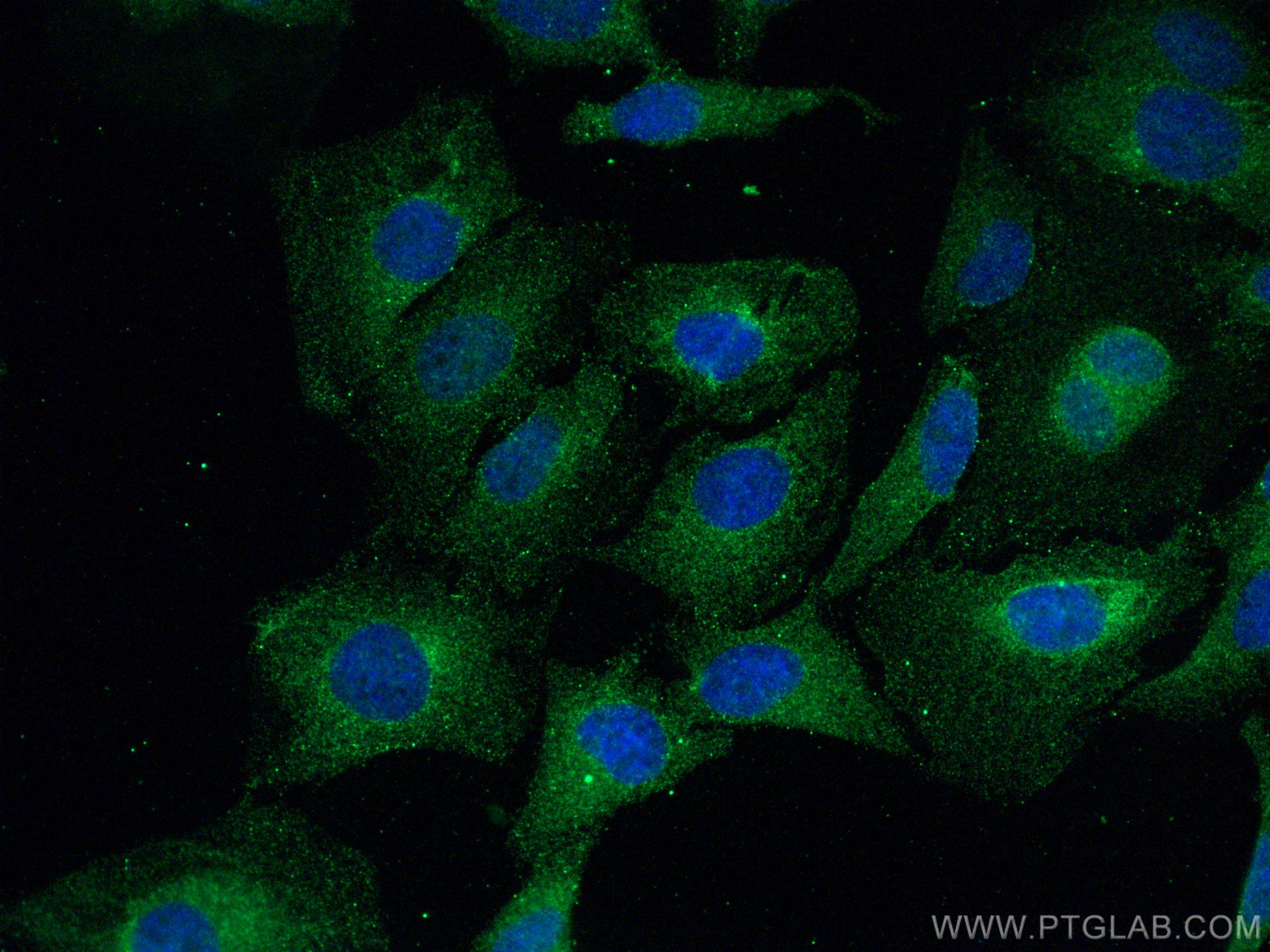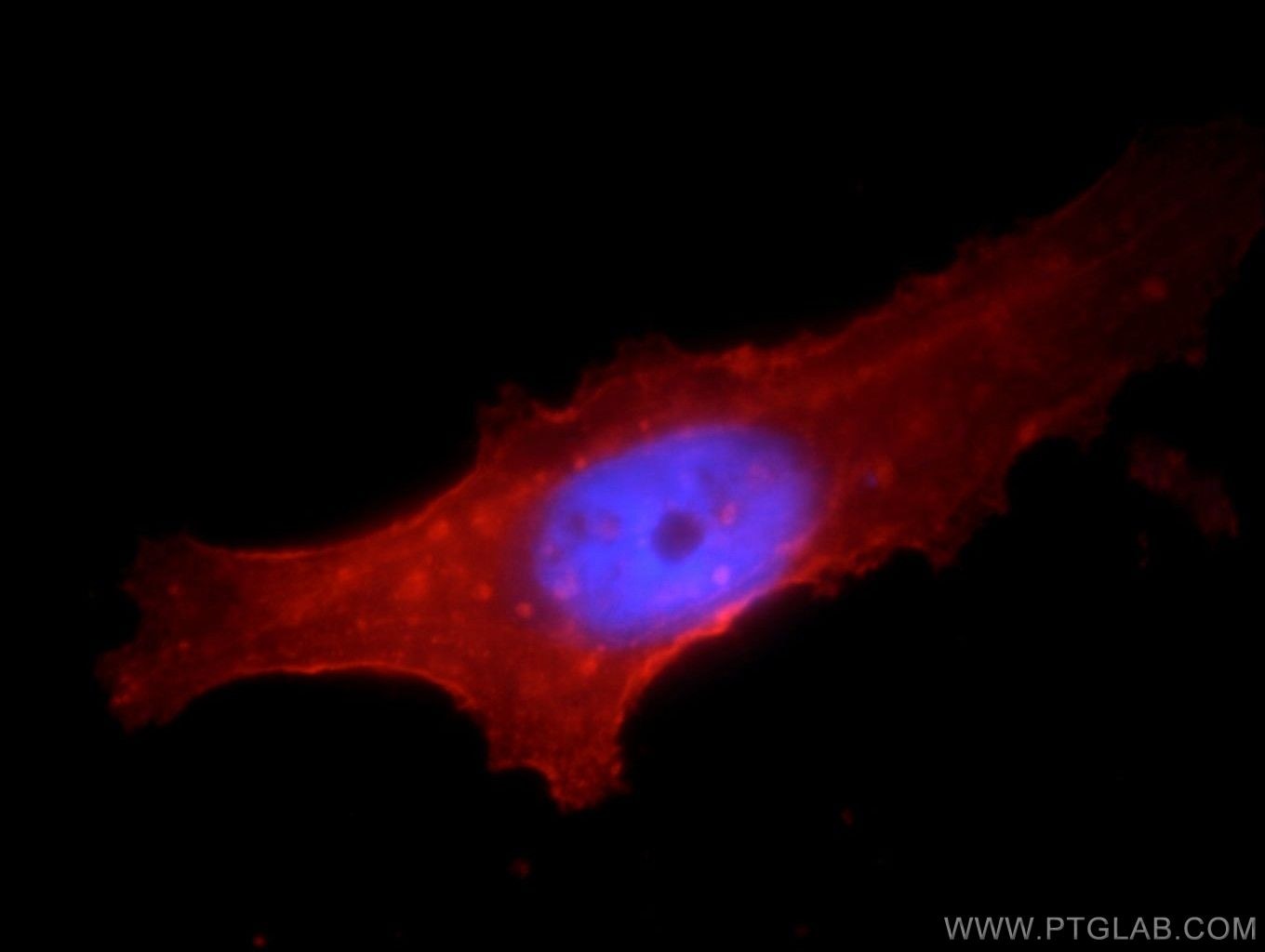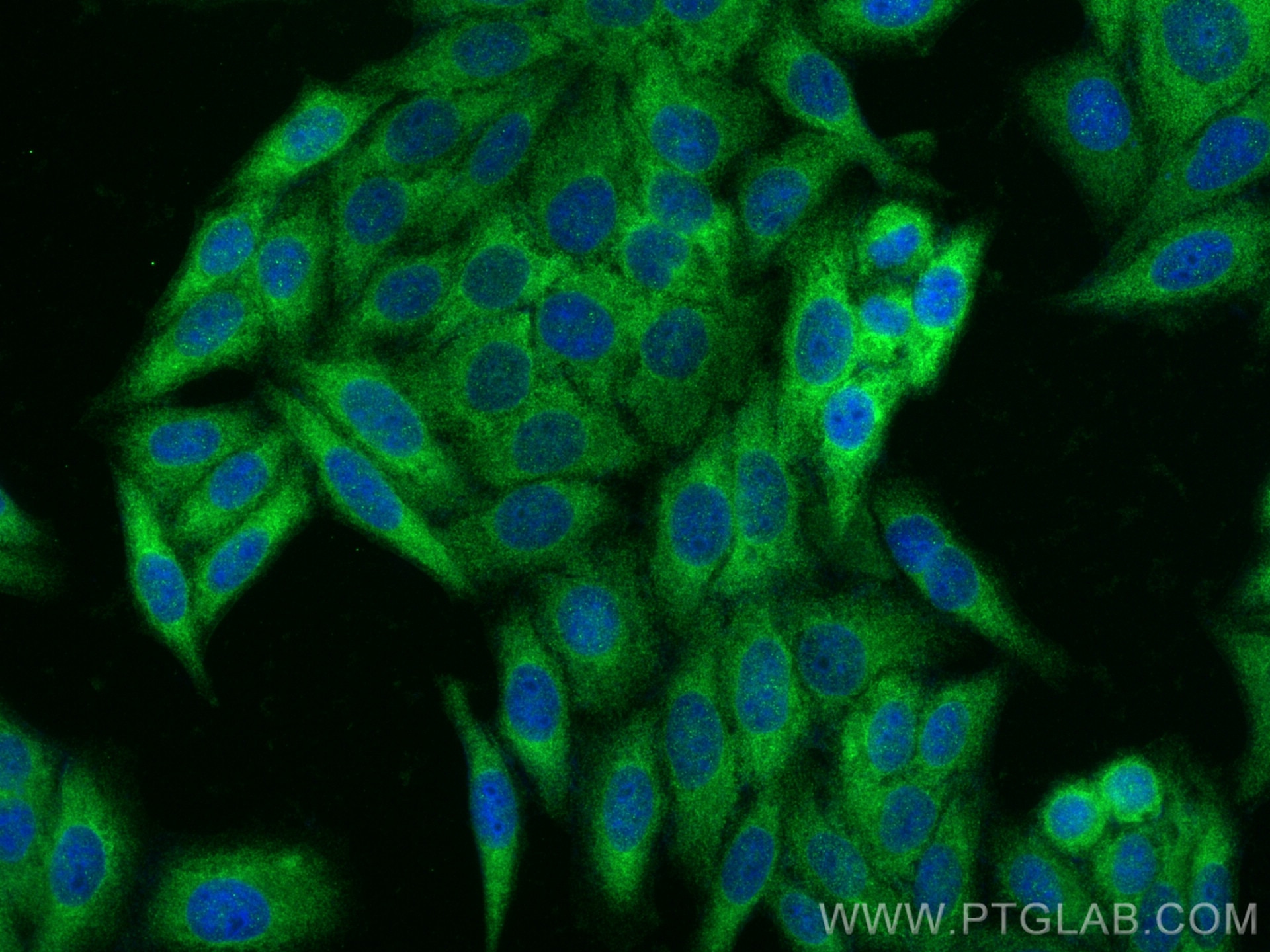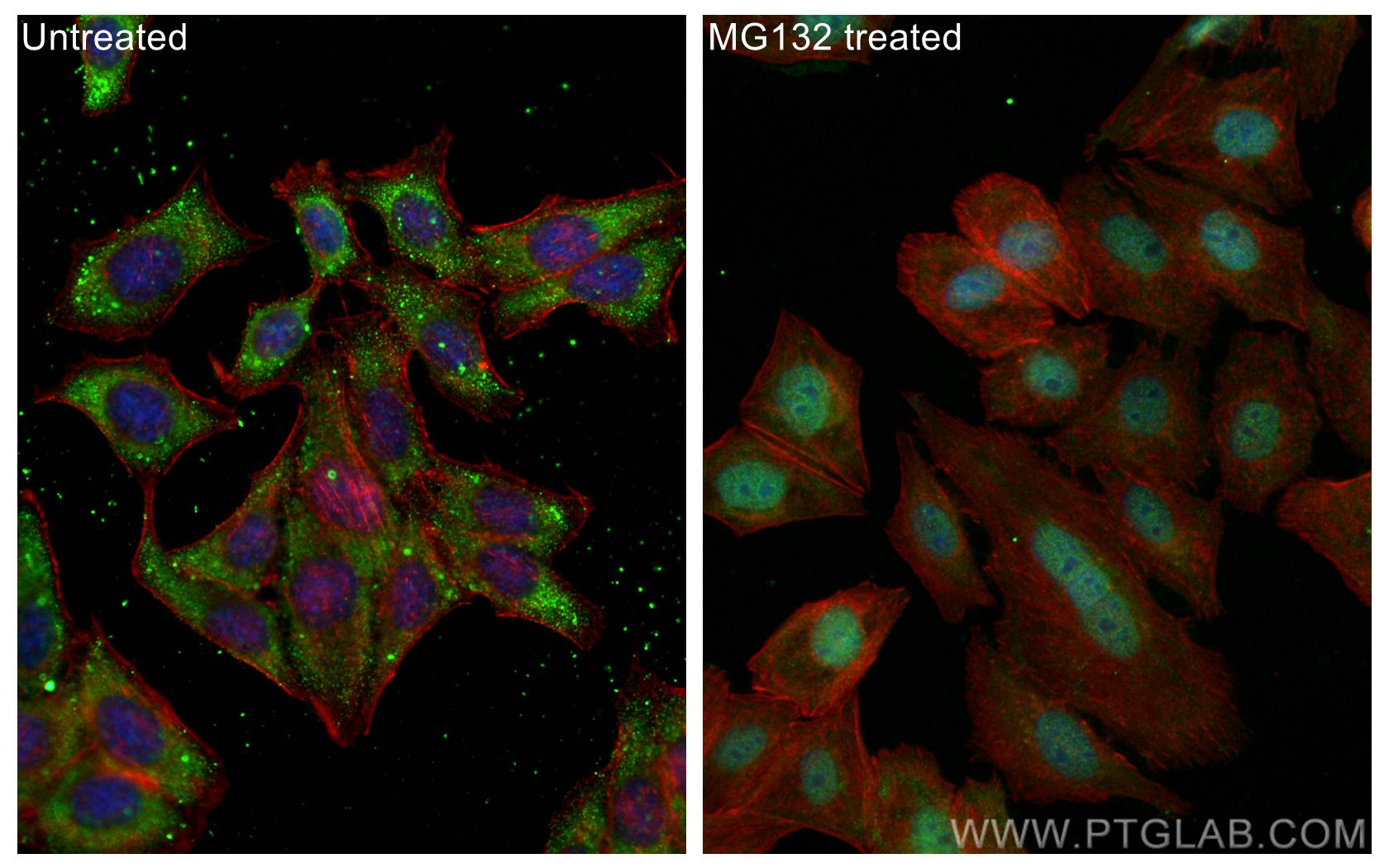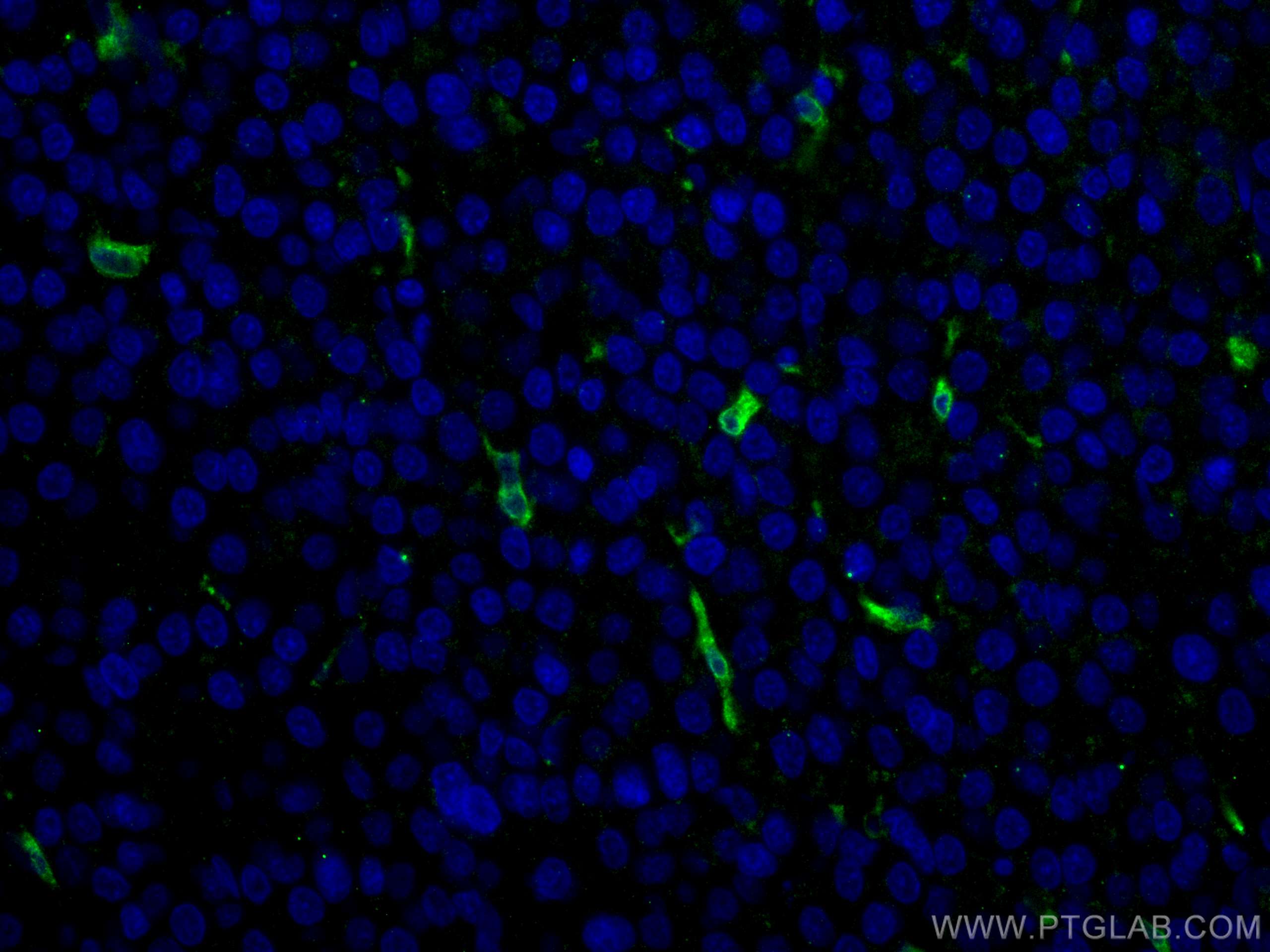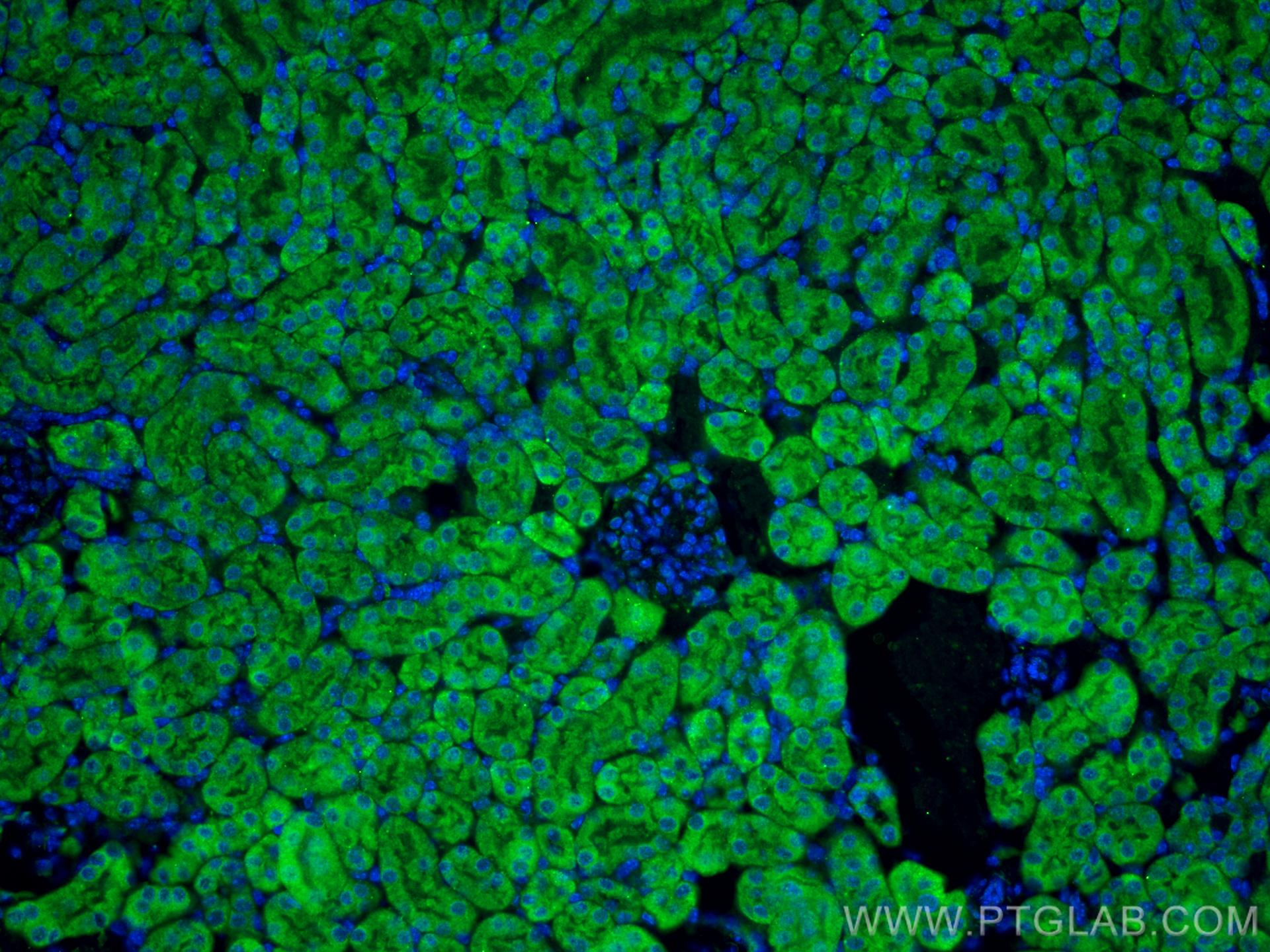Product Information
The Ferroptosis Expanded Antibody Kit provides a cost-effective tool for studying key proteins involved in the ferroptosis pathway. Perfect for researchers starting a new project, screening multiple prospective targets or those who simply require less volume.
Kit Components
The Ferroptosis Expanded Antibody Kit contains antibodies against 10 key protein targets playing critical roles in the ferroptotic cell death pathway.
| Antigen | Catalog No. | Host, clonality | Tested Reactivity | Applications | Volume |
| GPX4 | 67763-1-Ig | Mouse monoclonal | H, M, R, Rb, Pg, Dg, Hm, C, Z | WB, IHC, IF, ELISA | 20 uL |
| FSP1 | 20886-1-AP | Rabbit polyclonal | H, M, R | WB, IP, IHC, ELISA | 20 uL |
| SLC7A11/xCT | 26864-1-AP | Rabbit polyclonal | H | WB, IP, IHC, ELISA | 20 uL |
| CD98/SLC3A2 | 15193-1-AP | Rabbit polyclonal | H, M, R | WB, IHC, IF, ELISA | 20 uL |
| DMT1/SLC11A2 | 20507-1-AP | Rabbit polyclonal | H, M, R | WB, IHC, IF, ELISA | 20 uL |
| KEAP1 | 80744-1-RR | Rabbit monoclonal | H, M, R | WB, IHC, IF, ELISA | 20 uL |
| NRF2 | 80593-1-RR | Rabbit monoclonal | H | WB, IHC, IF/ICC, FC (Intra), IP, ELISA | 20 uL |
| HO-1 | 10701-1-AP | Rabbit polyclonal | H, M, R | WB, IP, IF, IHC, ELISA, FC (Intra) | 20 uL |
| ACSL4 | 22401-1-AP | Rabbit polyclonal | H, M, R | WB, IP, IHC, IF, ELISA | 20 uL |
| DHODH | 14877-1-AP | Rabbit polyclonal | H, M, R | WB, IP, IHC, IF, ELISA | 20 uL |
Also see our 'Ferroptosis Essentials Antibody Kit' on the following page https://www.ptglab.com/products/Ferroptosis-Essentials-Antibody-Kit-PK30002.htm
Storage
Store at -20°C. Stable for one year from the date of receipt.
Background Information
Ferroptosis is an iron-dependent form of regulated cell death characterized by an increase in intracellular reactive oxygen species (ROS) levels. The peroxidase GPX4, whose activity relies on glutathione (GSH) biosynthesis, is a key regulator of the ferroptosis pathway. GPX4 utilizes GSH as a cofactor to reduce intracellular lipid peroxides. Inactivation of GPX4 caused by intracellular GSH depletion leads to ROS accumulation, thereby triggering ferroptosis. Ferroptosis can also be regulated by the cell surface cysteine-glutamate antiporter (system xc-) consisting of SLC7A11 and SLC3A2 in conjunction with the glutathione metabolic pathway. Inhibition of system xc- prevents glutathione synthesis by inhibiting cysteine absorption, leading to oxidative stress and impairment of GPX4 activity, which in turn promotes ferroptosis. Recently, several GPX4-independent pathways including the FSP1-CoQ10 pathway have been shown to be involved in the regulation of ferroptosis.
DMT1 regulates ferroptosis by playing a key role in the modulation of iron homeostasis. The KEAP1-NRF2 pathway has been demonstrated to play a protective role against ferroptosis in multiple disease models. Induction of ferroptosis by the NRF2 target gene, HO-1 can have either detrimental or protective roles depending on levels of cellular iron and ROS. ACSL4, an enzyme mediating fatty acid metabolism acts as a key driver and biomarker of ferroptosis under specific conditions. Recent studies have highlighted the role of DHODH inhibition in tumor suppression by the induction of ferroptosis, thereby making it a potential therapeutic target for treating cancer.
Standard Protocols
Click here to view our standard protocols for various applications including WB, IP, IHC, IF, FC, and ELISA.
Cited in Article as
PK30003, Ferroptosis Expanded Antibody Kit, Proteintech, IL, USA
Documentation
| Datasheet |
|---|
| Ferroptosis Expanded Antibody Kit PK30003 datasheet |
Publications
| Application | Title |
|---|---|
Nat Commun Intermetallics triggering pyroptosis and disulfidptosis in cancer cells promote anti-tumor immunity | |
Biochem Biophys Res Commun Network pharmacology, molecular docking and experimental study on the mechanism of Curcumin's anti-ferroptosis in melanocytes |

